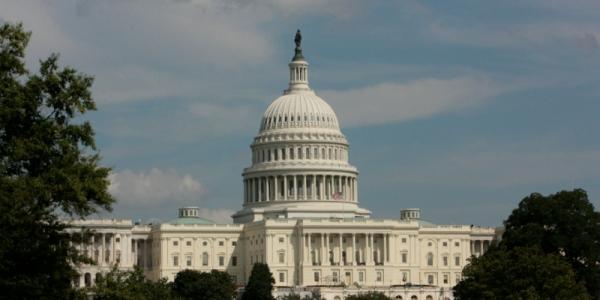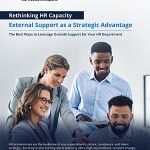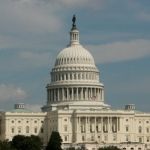IMPORTANT UPDATE: After this article was published, the Internal Revenue Service released some updated guidance for the 2025 tax year.
You have questions. And, we have answers. For employers, this article summarizes some of the most impactful provisions we’ve uncovered in the One Big Beautiful Bill Act (OBBBA). It also contains several action items to help get your path to compliance underway.
What is the OBBBA?
H.R. 1- One Big Beautiful Bill Act is a budget reconciliation bill. A budget reconciliation bill is typically a collection of bills compiled into a single bill. It is different than other bills in that it needs only a Senate majority (51 or more) vote, cannot be filibustered, or be subject to a supermajority (60 or more) vote. And, it can only contain certain policies on spending, revenue, and debt limit levels—it is subject to the “Byrd Rule” and it cannot contain prohibited/extraneous provisions. Congress can pass up to three reconciliation bills per fiscal year (one each containing only revenue provisions, only spending provisions, or only a change in the statutory debt limit). Although historically, these bills are combined and only a single omnibus bill is typically passed, if a bill is passed at all.
Here are some past reconciliation bills that may sound familiar:
- Inflation Reduction Act (2022)
- American Rescue Plan Act of 2021
- Tax Cuts and Jobs Act (2018)
The OBBBA passed the Senate on July 1. The House passed the Senate’s version on July 3, and President Trump signed the bill into law on July 4, 2025.
What was included in the OBBBA?
Where do we start? The engrossed amendment version of the OBBBA is 870 pages long. Sounds like a fun weekend read, don’t you agree? If you are shaking your head, you are not alone. That’s why we’ve summarized some key provisions impacting employers. Let’s get started, shall we?
No Federal Tax on Overtime
This is an eye-catching headline, isn’t it?! This provision of the bill allows for a federal tax deduction for ‘qualified’ overtime earned in tax years 2025 through 2028.
- The term ‘qualified overtime compensation’ means overtime compensation paid to an individual required under section 7 of the Fair Labor Standards Act of 1938 that is in excess of the regular rate (as used in such section) at which such individual is employed.
- FLSA overtime is paid at a rate of 1.5 times the regular rate of pay. The deduction is limited to the halftime earned over the regular rate. Example:
Hourly Regular Rate of Pay = $30.00
Overtime Rate of Pay = $30.00 x 1.5 = $45.00
Hours Worked in the Workweek = 45
Overtime Deduction = $15 x 5 = $75
- FLSA overtime is paid at a rate of 1.5 times the regular rate of pay. The deduction is limited to the halftime earned over the regular rate. Example:
- The amount allowed as a deduction under this section for any taxable year shall not exceed $12,500 ($25,000 in the case of a joint return).
- The amount allowable as a deduction shall be reduced (but not below zero) by $100 for each $1,000 by which the taxpayer’s modified adjusted gross income exceeds $150,000 ($300,000 in the case of a joint return.
- If the taxpayer is a married individual (within the meaning of section 7703), this section shall apply only if the taxpayer and the taxpayer’s spouse file a joint return for the taxable year.
- No deduction shall be allowed under this section unless the taxpayer includes on the return of tax for the taxable year such individual’s social security number.
- The deduction will be allowed for non-itemizers.
Start preparing for the 2025 tax year now by:
- Reviewing your hours and earnings codes used for payroll to ensure qualified overtime can be captured accurately.
- Reviewing your policies and procedures related to overtime.
- Contacting your payroll/HRIS vendor to understand how they will update their systems and Form W-2 configurations to allow for accurate reporting of qualified overtime.
- Preparing to educate your workforce.
No Federal Tax on Tips
Another catchy headline! Like the overtime provision, this provision of the bill allows for a federal tax deduction for ‘qualified’ tips earned in tax years 2025 through 2028.
- The term ‘qualified tips’ means cash tips received by an individual in an occupation which customarily and regularly received tips on or before December 31, 2024. The term ‘cash tips’ includes tips received from customers that are paid in cash or charged and, in the case of an employee, tips received under any tip-sharing arrangement. The tips must be:
- Paid voluntarily without any consequence in the event of nonpayment, is not the subject of negotiation, and is determined by the payor.
- The trade or business in the course of which the individual receives such amount is not a specified service trade or business (as defined in section 199A(d)(2))
- The amount allowed as a deduction under this section for any taxable year shall not exceed $25,000.
- The amount allowable as a deduction shall be reduced (but not below zero) by $100 for each $1,000 by which the taxpayer’s modified adjusted gross income exceeds $150,000 ($300,000 in the case of a joint return).
- In the case of qualified tips received by an individual during any taxable year in the course of a trade or business (other than the trade or business of performing services as an employee) of such individual, such qualified tips shall be taken into account under only to the extent that the gross income for the taxpayer from such trade or business for such taxable year (including such qualified tips) exceeds the sum of the deductions (other than the deduction allowed under this section) allocable to the trade or business in which such qualified tips are received by the individual for such taxable year.
- No deduction shall be allowed under this section unless the taxpayer includes on the return of tax for the taxable year such individual’s social security number.
- If the taxpayer is a married individual (within the meaning of section 7703), this section shall apply only if the taxpayer and the taxpayer’s spouse file a joint return for the taxable year.
- The deduction will be allowed for non-itemizers.
Start preparing for the 2025 tax year now by:
- Reviewing how your employees receive tips as compensation and consider any potential implications.
- Reviewing your tip reporting procedures.
- Ensuring your payroll/HRIS systems will be set up to accurately report tipped income.
- Preparing to educate your workforce.
High-Deductible Health Plans (HDHPs)
For plan years beginning after December 31, 2024, a plan shall not fail to be treated as a high-deductible health plan by reason of failing to have a deductible for telehealth and other remote care services. i.e., this is a safe harbor for HDHPs that offer telehealth without a deductible.
Start preparing now by:
- Contacting your employee benefits broker to ensure that plan designs and documentation align appropriately.
- Preparing to educate plan participants.
Health Savings Accounts (HSAs)
For months beginning after December 31, 2025, and with some exceptions and limitations, a direct primary care (DPC) service arrangement shall not be treated as a health plan for an arrangement under which such individual is provided medical care (as defined in section 213(d)) consisting solely of primary care services provided by primary care practitioners (as defined in section 1833(x)(2)(A) of the Social Security Act, determined without regard to clause (ii) thereof), if the sole compensation for such care is a fixed periodic fee. i.e., in some cases, a participant may be able to participate in an HSA and enter into a DPC arrangement without jeopardizing their eligibility to be enrolled in the HSA.
Start preparing now by:
- Contacting your employee benefits broker to ensure that plan designs and documentation align appropriately.
- Preparing to educate plan participants.
Flexible Spending Accounts (FSAs)
For tax years after December 31, 2025, dependent care flexible spending accounts may allow for a pre-tax maximum contribution of $7,500 (or $3,750 if married and filing separately). This is an increase from the original amounts set in 1986, up from $5,000 (or $2,500 if married and filing separately).
Start preparing now by:
- Making decisions on changes to your FSA plan that will satisfy nondiscrimination testing.
- Contacting your employee benefits broker to ensure that plan designs and documentation align appropriately.
- Working with your payroll/HRIS vendor to ensure system updates will be ready.
- Preparing to educate plan participants.
Trump Accounts
The provisions of the OBBBA are all fairly complex. Be certain, this is one that is most definitely complex. In general, with some exceptions, a Trump account shall be treated in the same manner as an individual retirement account under section 408(a)/individual retirement accounts (but not a Roth IRA).
Requirements:
The account is created or organized by the Secretary for the exclusive benefit of an eligible individual or such eligible individual’s beneficiaries, or is created or organized in the United States for the exclusive benefit of an individual who has not attained the age of 18 before the end of the calendar year, or such individual’s beneficiaries, and is funded by a qualified rollover contribution.
Trump accounts are for any individual who has not attained the age of 18 before the close of the calendar year in which the election is made, and for whom a social security number has been issued before the date on which an election is made.
Combined contribution limits are initially set at $5,000 annually.
Start preparing now by:
- Contacting your tax professional to understand your responsibilities and capabilities as an employer.
- Working with your payroll/HRIS vendor to ensure system updates will be ready.
- Preparing to educate your workforce.
Educational Assistance Plans and Student Loan Repayment
Employers’ ability to use Internal Revenue Code Section 127 plans to reimburse qualified student loans has been extended by the bill for tax years after December 31, 2025.
Paid Family and Medical Leave
Paid Family and Medical Leave tax credits are extended by the bill for tax years after December 31, 2025.
Medicaid
Subject to some exceptions, beginning in 2027, Medicaid eligibility will change.
- The individual works not less than 80 hours.
- The individual completes not less than 80 hours of community service.
- The individual participates in a work program for not less than 80 hours.
- The individual is enrolled in an educational program at least half-time.
- The individual engages in any combination of the activities for a total of not less than 80 hours.
- The individual has a monthly income that is not less than the applicable minimum wage requirement under section 6 of the Fair Labor Standards Act of 1938, multiplied by 80 hours.
- The individual had an average monthly income over the preceding 6 months that is not less than the applicable minimum wage requirement under section 6 of the Fair Labor Standards Act of 1938 multiplied by 80 hours and is a seasonal worker, as described in section 45R(d)(5)(B) of the Internal Revenue Code of 1986.
Why does this matter to employers?
With an hours worked verification requirement, it would seem likely that hours worked will become part of the W-2. There may also be the possibility that Medicaid recipients will seek part-time work opportunities to maintain their eligibility, which could positively impact certain industries.
Start preparing now by:
- Working with your payroll/HRIS vendor to ensure system updates will be ready.
Transportation Benefits and Moving Expenses
The bill permanently eliminates the exclusion from gross income of reimbursements paid by an employer to an employee for expenses incurred to purchase, improve, repair, and store a bicycle that is regularly used to travel between the employee’s residence and place of work (qualified bicycle expenses).
The bill also permanently eliminates for most individuals the above-the-line tax deduction for moving expenses incurred to begin working in a new location.
Start preparing now by:
- Contacting your tax professional to understand your responsibilities and capabilities as an employer.
- Working with your payroll/HRIS vendor to ensure system updates will be ready.
- Preparing to educate your workforce.
Conclusion
We know our readers are looking for some light reading when it comes to the OBBBA. This less-than-870-page summary hopefully highlights for you several important provisions impacting employers. As additional details, enforcement regulations, and interpretations emerge, we’ll keep you informed.
Until then, if you have any questions, please contact us; we are just a call away.
Source: congress.gov







